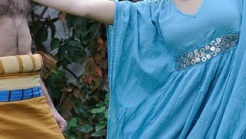

Greece
Gortys is one of the most important cities in Crete, with a continuous history of 6000 years, and one of the largest archaeological sites in Greece. It is situated in the south central part of Crete, in the fertile vallry of Messara, which was first inhabited during the end of the Neolithic period
Gortys is one of the most important cities in Crete, with a continuous history of 6000 years, and one of the largest archaeological sites in Greece. It is situated in the south central part of Crete, in the fertile vallry of Messara, which was first inhabited during the end of the Neolithic period (5th millennium BC)
The name Gortyna, according to tradition, came from Gortynas, son of Radamathis, king of Phaestos and brother of Minoas who founded it.
Gortyna was one of the first areas in Crete to attract explorers’ and archaeologists’ interest as long ago as the Turkish era, in the end of the 19th century, at a time when no one knew anything about the Minoan civilization, as its existence was unknown or considered a legend.
In 1884, the finding and restoration of the Great Sign by Iosif Chatzidakis, Stefanos Ksanthoudidis and the Italian prompted the archaeological research of the area of Gortyna. The digs in the wider area of Gortyna brought to light impressive architectural compounds, as well as findings, whereas until today a large part of the Roman city has not been dug up. The most important findings are exhibited in the Heraklio Archaeological museum, while the creation of the Messara Museum to house them, is expected to be built in the near future.


1600 B.C. Spring festival Guests proceed to the theatre of the palace to honour the Great Mother, Goddess Nature. The guide informs the guests about the proceedings. Everybody is excited about what will follow. The high-priestess enters the stage. She is burning incense from aromatic herbs of the


The museum is housed in the same building as the old Venetianturkey Headquarters Complex, which was within the perimeter of the Venetian castle, which was strengthened during the Turkish occupation.


Aenea was a small Macedonian city, which was attached to the then newlyfounded Thessaloniki, when it was founded in 315BC by Kassandros. It was close to the Thermaikos gulf.
1039 Ε 6061 01515 00